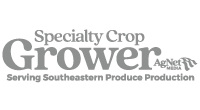By Ute Albrecht Replicated field studies have demonstrated positive effects of oxytetracycline administered by trunk injection to manage HLB. In October 2022, a 24(c) special local need label was approved that allows the use of this technology in Florida, and final clearance was given in January. When practicing trunk injection, it is important to do so properly and to be …
IPCs Changing the Florida Citrus Landscape
The use of individual protective covers (IPCs) to safeguard young citrus trees from HLB has become a common practice in Florida groves in recent years. Fernando Alferez, an assistant professor of citrus horticulture with the University of Florida Institute of Food and Agricultural Sciences (UF/IFAS), has led the research effort to study IPCs and their effectiveness in preventing HLB. He …
Examining Hamlin Survivor Trees
By Gary England, Fred Gmitter and Manjul Dutt In 2014, most groves in Central Florida had citrus greening infection rates approaching 100%, but a Lake County grower reported that some trees in his Hamlin on Swingle blocks seemed to be relatively healthy. Some visual HLB symptoms were observed on these “surviving” trees, but they did not have the massive fall …
Revised Approach to Reduce ACP Management Costs
By Lukasz Stelinski Vector control is considered a basic component of HLB management even under high disease incidence scenarios. A recent study compared the effects of three different economic thresholds (ET-0.2, ET-0.5 and ET-1.0) and one calendar-based application schedule on the incidence of Asian citrus psyllid (ACP) and beneficial species in plots of commercially grown citrus. The study also examined …
Sweet Valley Citrus Expansion Could Stall
Trees in the Sweet Valley Citrus region have been in high demand in recent years. Plantings of satsuma mandarins and other citrus varieties have steadily risen the past few years in Georgia, Alabama and North Florida. That steady climb is expected to stall this year, however. Following the Christmas freeze event that rattled the industry in the Southeast in December …
Pest Management Findings Shared
Foliar sprays of insecticides timed to citrus flushing provided a significant reduction in Asian citrus psyllid (ACP) populations compared to standard grower practices, researcher Jawwad Qureshi reported. Timing sprays to flushing also led to a reduction in sprays, the University of Florida Institute of Food and Agricultural Sciences associate professor of entomology said in a virtual presentation on Feb. 22. …
BMP Updates Highlighted at Workshop
The University of Florida Institute of Food and Agricultural Sciences (UF/IFAS) hosted a water and nutrient management workshop at the Citrus Research and Education Center in mid-February. In addition to seminars, a grove tour was provided to demonstrate a nutrient-rate trial currently underway at the center. Kelly Morgan, UF/IFAS professor of crop nutrition, spoke on recent activity to update citrus …
Sneak Peek: March 2023 Citrus Industry
The March cover of Citrus Industry magazine features a fresh face in a key industry leadership role for Florida. Morgan McKenna Porter is bringing youthful energy to her new title as president of the Citrus Research and Development Foundation (CRDF) board of directors. In the cover story, learn about her background as well as her CRDF goals for helping growers …
Citrus Still a Strong Contributor to Florida Economy
Despite challenges from diseases, land development trends and extreme weather, Florida’s citrus industry contributed $6.935 billion to the state’s economy in 2020–21. That’s a conclusion in a recent University of Florida Institute of Food and Agricultural Sciences (UF/IFAS) report, 2020–2021 Economic Contributions of the Florida Citrus Industry. The report estimated the economic contributions for the most recent citrus marketing season …
Freeze Recovery Advice
Winter Storm Elliott brought freezing temperatures to the cold-hardy region Dec. 24–28, 2022, resulting in significant injury to citrus. Danielle Williams, Muhammad Adnan Shahid and Mujahid Hussain, all with the University of Florida Institute of Food and Agricultural Sciences (UF/IFAS), provided storm recovery advice in a recent edition of the Cold Hardy Citrus Connection newsletter. Following is a summary of …
All In For Citrus Podcast, February 2023
With spring fast approaching, Michael Rogers, director of the University of Florida Institute of Food and Agricultural Sciences (UF/IFAS) Citrus Research and Education Center, addresses important crop care items that should be on growers’ checklists. He shares his comments in the February episode of the All In For Citrus podcast. After the destruction left behind from last year’s hurricanes, Rogers …
Post-hurricane Expectations for Foliar Diseases and Phytophthora
By Megan Dewdney For foliar diseases, 2022 started off easily with limited outbreaks in Florida because the spring was dryer than average. The same La Niña weather pattern responsible for the dry conditions of the last two springs is predicted to occur again this winter into early spring. The weather pattern is then predicted to become a neutral pattern with …
New Invasive Pest to Watch for in Florida Citrus
By Maegan Beatty An invasive butterfly that seriously damages citrus trees has been spotted in Florida. The lime swallowtail (Papilio demoleus) is an invasive species from Asia that has harmed citrus trees in the Caribbean for almost 20 years. The butterfly has a wingspan of nearly 4 inches with black and white marks across the wings and a red-orange dot …
OLL Sweet Oranges Producing Pre-HLB Fruit Quality
By Jude Grosser, Fred Gmitter and Maria Brenelli The new OLL (Orie and Louise Lee) series of sweet oranges (OLL-4, OLL-8 and OLL-20) are very high-quality processing sweet oranges that generally produce higher soluble solids and better juice color than Valencia. OLL trees are more vigorous than Valencia, and anecdotal evidence suggests they are slightly more HLB-tolerant than Valencia. Trees …
Sourcing Sweetness Compounds in Citrus
A lot goes into a piece of citrus fruit. Down to the molecular level, there’s millions of compounds that make up Florida’s signature crop. Researchers at the University of Florida Institute of Food and Agricultural Sciences (UF/IFAS) are exploring the genetic building blocks of citrus to learn how individual compounds can be used to enhance the fruit. Those applications might …
Effects of Compost and Organic Amendments on Weed Control
By Ramdas Kanissery and Mahesh Bashyal Using compost and soil amendments is beneficial to Florida citrus groves. Florida soils are sandy and have a low organic matter and cation exchange capacity. Adding compost and organic amendments (e.g., humic acid) can enhance the soil’s ability to retain water and nutrients. These practices can also boost soil microbial activity and improve soil …
Keeping Trees Healthy After Removing IPCs
Researchers and growers have found that individual protective covers (IPCs) can keep young trees free of HLB for two or more years while providing additional benefits like improved tree growth. The IPCs work by keeping HLB-infecting Asian citrus psyllids out of the tree canopies. But trees outgrow the covers and must eventually be removed. Researchers have found that about 60% …
Refreshed Format for Florida Grower Citrus Show
Over the years, the Florida Grower Citrus Show has become the premier event for growers on the East Coast of Florida while drawing growers from other key production regions as well. Last year, AgNet Media purchased the assets of Florida Grower magazine. With that transaction came the show. Since that time, the team at AgNet Media, along with its partners …
Old Variety Gets a New Look
The Parson Brown is an early-season sweet orange that J.L. Carney identified in 1875. By the 1920s, the variety had become a popular cultivar among growers, but eventually plantings declined as Hamlin became the go-to selection for the early season. However, because of its apparent tolerance to HLB, Parson Brown is again stirring interest among growers. Manjul Dutt, assistant professor …
Trunk Injection for HLB: What You Need to Know
Some Florida citrus growers have recently started oxytetracycline hydrochloride (OTC-HCl) injection into tree trunks to help manage HLB. Other growers are considering it. Researcher Ute Albrecht offered a list of best practices for the product’s use during a Jan. 31 presentation in Immokalee. The presentation was made at the University of Florida Institute of Food and Agricultural Sciences Southwest Florida …





























